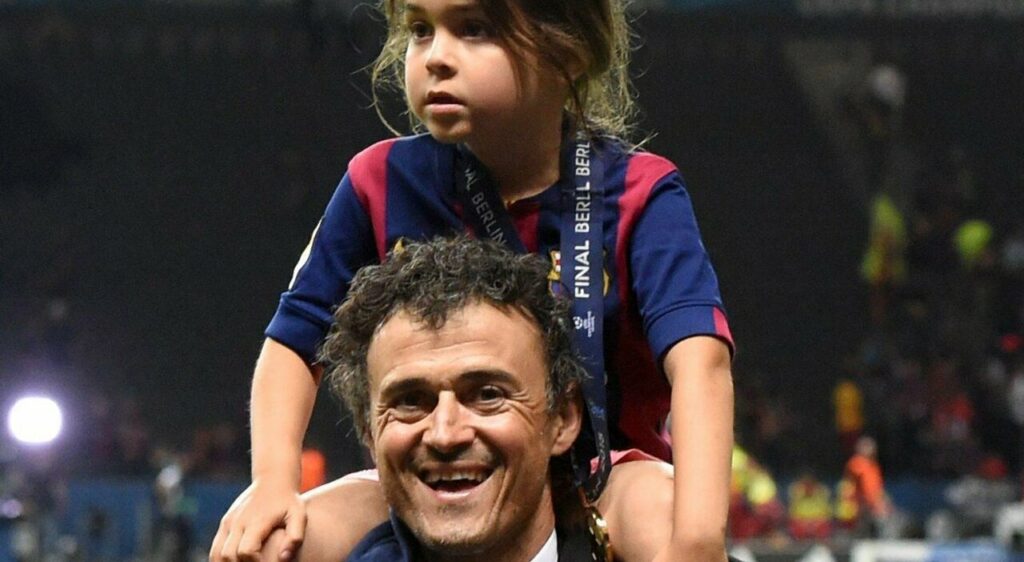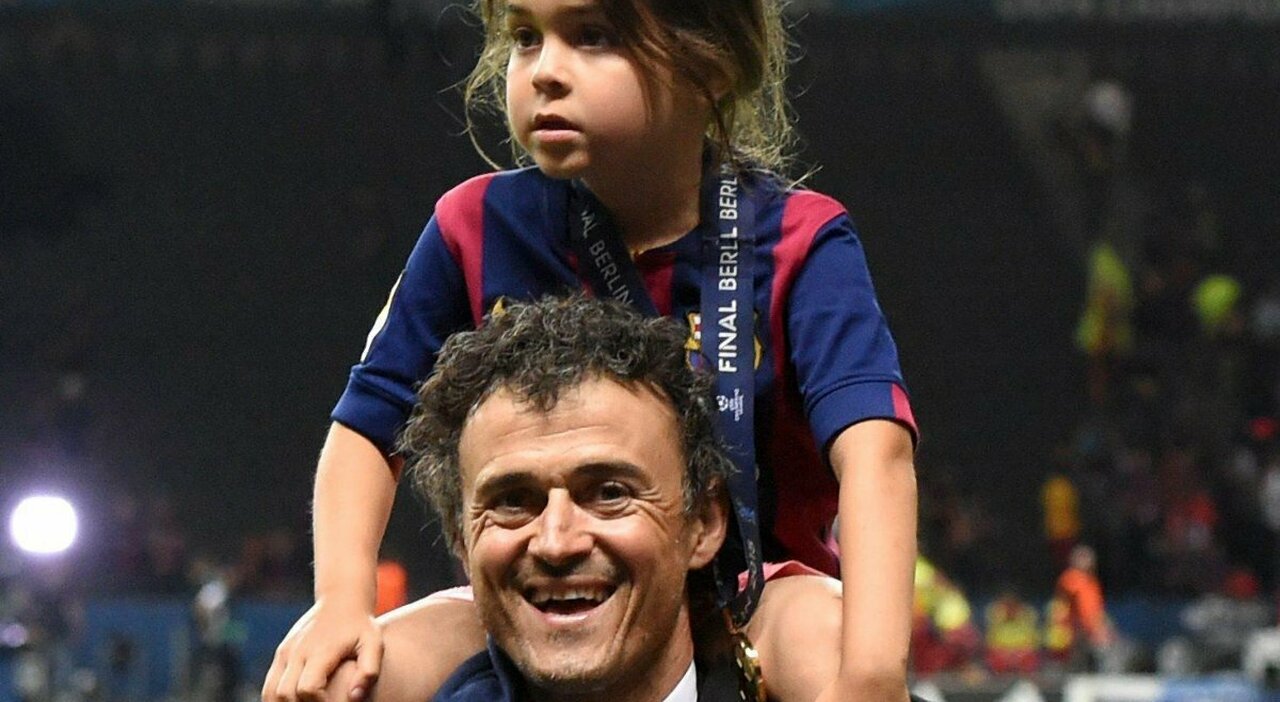
## Luis Enrique’s Daughter Xana: Understanding the Reason Behind Her Untimely Death and Honoring Her Legacy
The tragic loss of Xana, the daughter of renowned Spanish football manager Luis Enrique, deeply impacted the world. The question surrounding “luis enrique daughter xana death reason” remains a source of sorrow and a topic that warrants sensitive and respectful exploration. This article aims to provide a comprehensive understanding of the circumstances surrounding Xana’s passing, the type of illness she battled, and the lasting impact of her life and legacy. We will delve into the details with empathy and accuracy, offering insights that respect the family’s privacy while fulfilling the need for information and understanding. This article also seeks to address the broader context of childhood illnesses and the importance of research and support for affected families.
We aim to provide a resource that is not only informative but also supportive, acknowledging the pain and grief associated with this topic. Our goal is to offer clarity and understanding while upholding the highest standards of journalistic integrity and respect for the Enrique family.
## The Heartbreaking News: Xana’s Battle and Passing
On August 29, 2019, Luis Enrique shared the devastating news of his daughter Xana’s passing. She was only nine years old. The announcement, made via social media, revealed that Xana had been fighting osteosarcoma, a type of bone cancer, for five months. The outpouring of grief and support from the football community, the public, and beyond was immense, demonstrating the widespread impact of this personal tragedy.
### Osteosarcoma: The Illness That Claimed Xana’s Life
Osteosarcoma is a primary bone cancer that most commonly affects children and adolescents, although it can occur in adults as well. It typically develops in the rapidly growing areas of bones, such as around the knees or shoulders. While relatively rare, osteosarcoma is an aggressive cancer that requires prompt diagnosis and treatment. According to leading oncologists, early detection and comprehensive treatment plans are crucial for improving outcomes. The exact cause of osteosarcoma is not fully understood, but genetic factors and previous radiation exposure may play a role.
Symptoms of osteosarcoma can include:
* Bone pain, which may worsen over time
* Swelling or a lump in the affected area
* Limited range of motion
* Fractures (in rare cases)
Treatment typically involves a combination of chemotherapy, surgery to remove the tumor, and sometimes radiation therapy. Research into new and more effective treatments for osteosarcoma is ongoing, offering hope for improved survival rates and quality of life for patients.
### The Enrique Family’s Strength and Resilience
Throughout Xana’s illness, the Enrique family maintained a remarkable level of strength and resilience. Luis Enrique, who had stepped down as the coach of the Spanish national team a few months prior, dedicated his time to supporting his daughter and family during this challenging period. The family’s privacy was largely respected by the media, allowing them to navigate this difficult time with dignity. The family’s experience underscores the importance of family support and access to quality medical care when facing a serious illness.
## Xana’s Legacy: A Lasting Impact
Despite her young age, Xana left an indelible mark on the hearts of many. Her story has raised awareness of childhood cancer and inspired countless individuals to support research and initiatives aimed at improving the lives of children battling this disease. Luis Enrique and his family have continued to honor Xana’s memory through various philanthropic endeavors.
### The Xana Foundation: Supporting Childhood Cancer Research
Following Xana’s passing, the Enrique family established the Xana Foundation. This organization is dedicated to funding research into osteosarcoma and other childhood cancers, as well as providing support to families affected by these illnesses. The foundation’s mission is to improve the lives of children with cancer and to ultimately find a cure for these devastating diseases. According to the Xana Foundation’s website, a significant portion of their funding goes directly to research projects focused on developing new and more effective treatments for osteosarcoma.
### Raising Awareness and Inspiring Hope
Xana’s story has served as a powerful reminder of the challenges faced by children with cancer and their families. It has also inspired hope and encouraged greater investment in research and support services. Many organizations dedicated to fighting childhood cancer have reported an increase in donations and volunteerism following the widespread media coverage of Xana’s passing. The impact of Xana’s life extends far beyond her immediate family, touching the lives of countless individuals affected by childhood cancer.
## Understanding Osteosarcoma: A Deeper Dive
To further understand the “luis enrique daughter xana death reason,” it’s crucial to delve deeper into osteosarcoma itself. This section will provide a more in-depth look at the disease, its diagnosis, treatment, and ongoing research efforts.
### Diagnosis and Staging
The diagnosis of osteosarcoma typically involves a combination of imaging tests, such as X-rays, MRI scans, and bone scans, as well as a biopsy to confirm the presence of cancer cells. Once a diagnosis is confirmed, the cancer is staged to determine the extent of the disease. Staging helps doctors determine the best course of treatment and predict the patient’s prognosis. According to medical experts, accurate staging is crucial for developing an effective treatment plan.
### Treatment Options
The primary treatment for osteosarcoma usually involves a combination of chemotherapy, surgery, and sometimes radiation therapy. Chemotherapy is used to kill cancer cells throughout the body, while surgery is performed to remove the tumor. In some cases, radiation therapy may be used to kill any remaining cancer cells after surgery. The specific treatment plan will depend on the stage of the cancer, its location, and the patient’s overall health.
### Ongoing Research and Clinical Trials
Research into new and more effective treatments for osteosarcoma is ongoing. Clinical trials are being conducted to evaluate new drugs, therapies, and surgical techniques. These trials offer hope for improved survival rates and quality of life for patients with osteosarcoma. Families affected by osteosarcoma are often encouraged to explore clinical trial options with their doctors.
## The Role of Support Systems and Mental Health
Dealing with a diagnosis of osteosarcoma, whether as a patient or a family member, can be incredibly challenging. The emotional and psychological toll can be significant, highlighting the importance of support systems and mental health care.
### Support Groups and Counseling
Support groups and counseling services can provide a safe and supportive environment for patients and families to share their experiences, connect with others facing similar challenges, and learn coping strategies. These resources can help individuals navigate the emotional and psychological challenges of dealing with cancer. Many hospitals and cancer centers offer support groups and counseling services specifically for patients with osteosarcoma and their families.
### The Importance of Mental Health Care
Mental health care is an essential component of comprehensive cancer care. Patients and families may benefit from therapy, medication, or other interventions to address anxiety, depression, or other mental health concerns. Addressing mental health needs can improve overall well-being and quality of life during and after cancer treatment.
## Contributing to the Fight Against Childhood Cancer
There are many ways to contribute to the fight against childhood cancer and honor the memory of Xana Enrique. Supporting research, raising awareness, and providing support to families are all valuable contributions.
### Donating to Research Organizations
Donating to organizations that fund research into childhood cancer is a direct way to support the development of new and more effective treatments. Organizations such as the Xana Foundation, the St. Jude Children’s Research Hospital, and the American Cancer Society are actively involved in funding research projects aimed at improving the lives of children with cancer.
### Volunteering Time and Resources
Volunteering time and resources to organizations that support families affected by childhood cancer is another meaningful way to contribute. Volunteers can provide companionship, transportation, or other practical assistance to families in need. Many hospitals and cancer centers rely on volunteers to provide support services to patients and families.
### Raising Awareness
Raising awareness about childhood cancer can help to increase public understanding of the disease and encourage greater investment in research and support services. Sharing information about childhood cancer on social media, participating in fundraising events, and advocating for policies that support cancer research are all ways to raise awareness.
## Frequently Asked Questions (FAQs) About Osteosarcoma and Xana’s Story
Here are some frequently asked questions related to “luis enrique daughter xana death reason” and osteosarcoma:
**Q1: What is osteosarcoma?**
A1: Osteosarcoma is a type of bone cancer that primarily affects children and adolescents. It typically develops in the rapidly growing areas of bones, such as around the knees or shoulders.
**Q2: What are the symptoms of osteosarcoma?**
A2: Symptoms can include bone pain, swelling or a lump in the affected area, limited range of motion, and fractures (in rare cases).
**Q3: How is osteosarcoma diagnosed?**
A3: Diagnosis typically involves imaging tests (X-rays, MRI scans, bone scans) and a biopsy to confirm the presence of cancer cells.
**Q4: What are the treatment options for osteosarcoma?**
A4: Treatment usually involves a combination of chemotherapy, surgery, and sometimes radiation therapy.
**Q5: What is the survival rate for osteosarcoma?**
A5: Survival rates vary depending on the stage of the cancer, its location, and the patient’s overall health. Early detection and comprehensive treatment are crucial for improving outcomes. According to recent studies, the 5-year survival rate for localized osteosarcoma is approximately 70-80%.
**Q6: What is the Xana Foundation?**
A6: The Xana Foundation is an organization established by the Enrique family to fund research into osteosarcoma and other childhood cancers, as well as provide support to families affected by these illnesses.
**Q7: How can I support the fight against childhood cancer?**
A7: You can support the fight against childhood cancer by donating to research organizations, volunteering time and resources, and raising awareness.
**Q8: What role does genetics play in osteosarcoma?**
A8: While the exact cause of osteosarcoma is not fully understood, genetic factors may play a role in some cases. Certain genetic syndromes are associated with an increased risk of developing osteosarcoma.
**Q9: Is osteosarcoma preventable?**
A9: There is currently no known way to prevent osteosarcoma. However, early detection and treatment can improve outcomes.
**Q10: Where can I find more information about osteosarcoma?**
A10: You can find more information about osteosarcoma from reputable sources such as the American Cancer Society, the National Cancer Institute, and the Mayo Clinic.
## Conclusion: Remembering Xana and Continuing the Fight
The “luis enrique daughter xana death reason” is a poignant reminder of the devastating impact of childhood cancer. Xana’s story has touched the hearts of many and inspired countless individuals to support research and initiatives aimed at improving the lives of children battling this disease. By understanding osteosarcoma, supporting research efforts, and providing support to families, we can honor Xana’s memory and contribute to the fight against childhood cancer.
We hope this article has provided valuable information and insights into the circumstances surrounding Xana’s passing and the broader context of osteosarcoma. Let us continue to remember Xana and work towards a future where all children have the opportunity to live healthy and fulfilling lives.
Share your thoughts and support in the comments below. Consider donating to the Xana Foundation or other childhood cancer research organizations to help make a difference.

